This is Steffen from PokerCode and today I want to analyze a crazy hand I found on the internet. Let's try to look into the head of a sage named Rui Cao and find out what happened or could have happened in this hand.
The game is played at the Triton series in Madrid: €1,000/€2,000 blinds with a mandatory €4,000 straddle.
We talked in detail about the course of this fun session in the October review.
The hand Steffen is talking about was preceded by the following episode:
– Let's play with bounty for , – Tom Dwan offered to shake up the game.
– Better with , , and , – Elton Tsang put forward a counter offer.
“This is too much,” Wai Kin Yong objected, “choose one thing.”
– Well, you and nit, let's at least and ? Dwan did not calm down.
“I am also against it,” Rui Kao refused, “it is beneficial for tight players, and besides, I lose too much.
– Then only for 10k. All agree? Durrrr made another attempt.
"Okay," Rui agreed.
After a while…
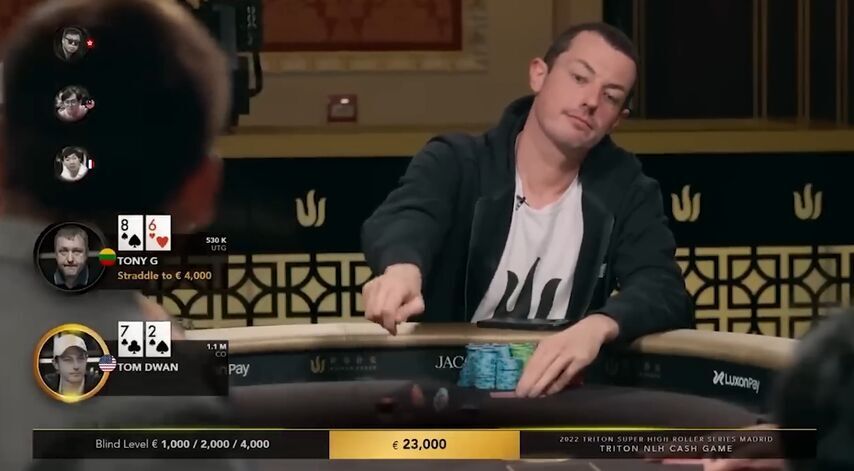
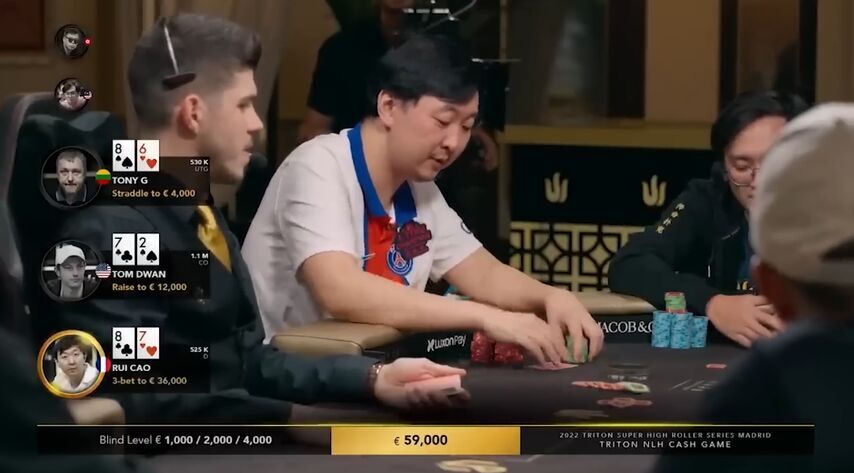
Preflop, Tom Dwan raises from the CO with a completely standard three times the straddle with . I believe the game comes with extra payouts for winning with 72o. Rui Cao, taking advantage of his position, decides to 3-bet €36,000 on the button with his . The sizing is standard, but the hand is not quite. Everyone folds except for Tom, who decides to call and try to outplay his opponent post-flop.
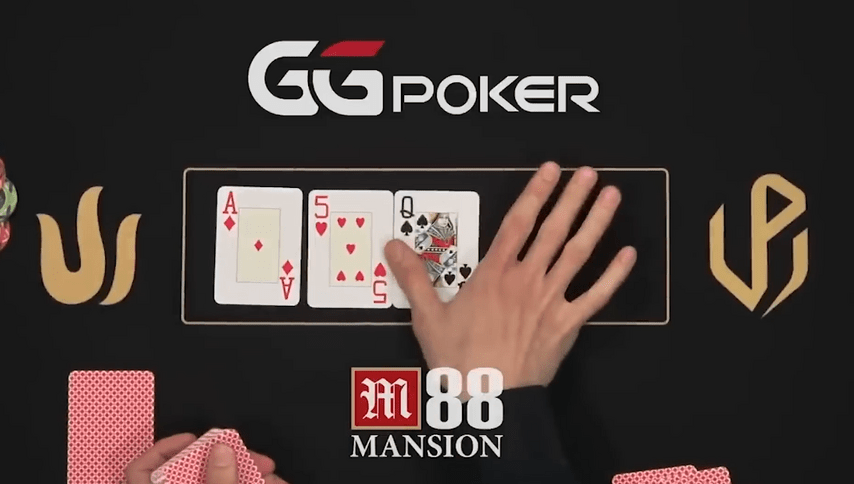
Tom checks.
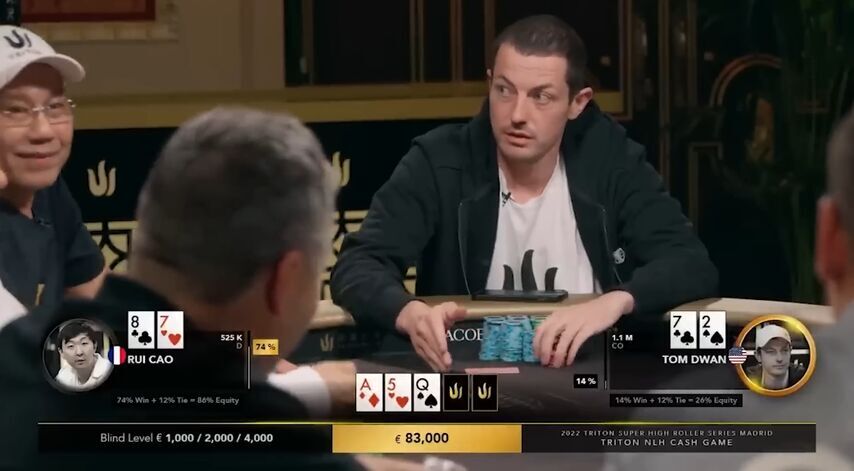
Rui c-bets €30k.
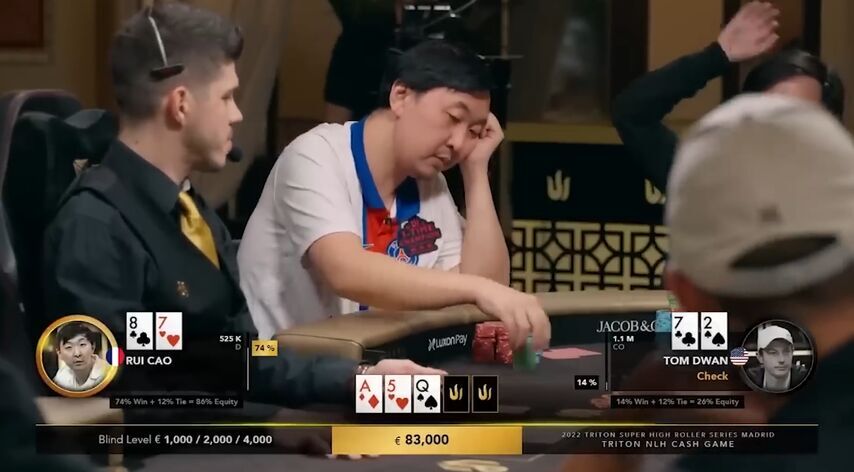
Tom check-raises more than four times.
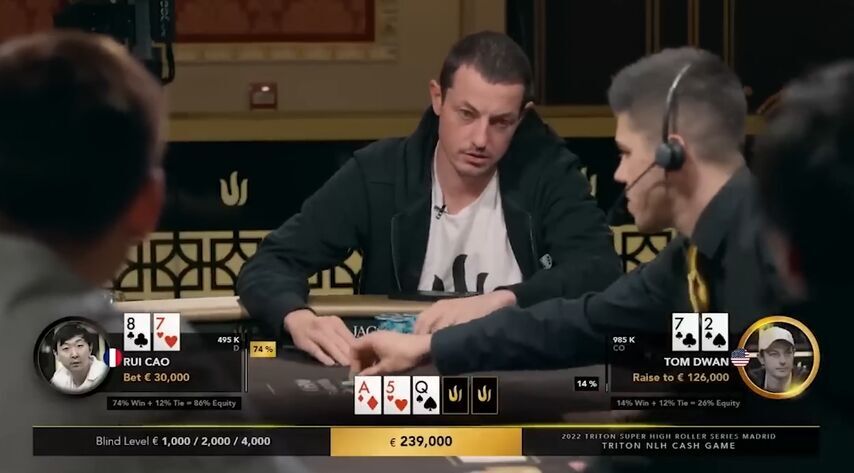
Rui checks his cards, thinks for about a minute and calls.
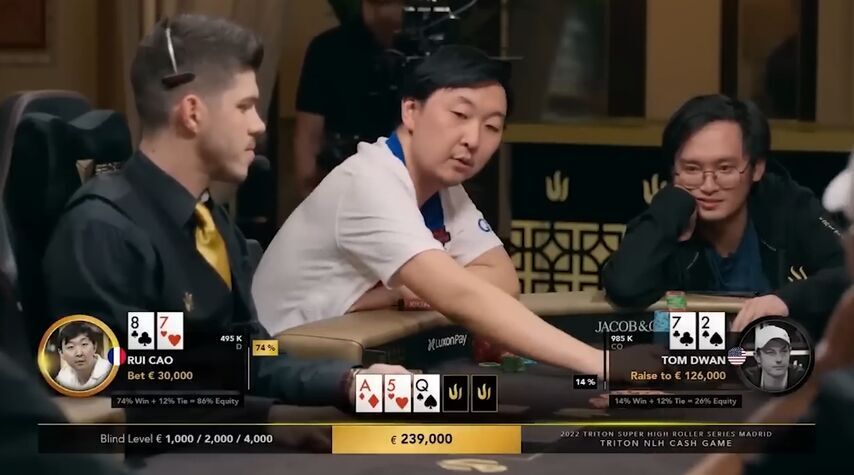
Obviously, the flop didn't help either player, but what about ranges? It's not easy, of course, to guess the ranges in crazy games like this, but I still think that Tom should always start by checking. His opponent's 87o is not the most standard hand, but in position and in deep stacks, you can try to play this. As for standard 3-betting range hands, the board looks perfect for continuing the aggression with a small sizing. Attacking all of Tom's hands that didn't hit the flop, making him fold small pockets and getting ready to knock out with the second barrel , , , , and . After the button knocks out all pairs under for the opponent, most of the turns will be a blank, and you can continue to attack.
Rui makes a small bet. Tom decides to actively play his 72o and check-raises. Rui calls. But how?
Indeed, some kind of madness is unfolding: a standard c-bet on the flop comes with a big check-raise by 7-high and a call by 8-high! Okay, Tom's desire to win the hand and receive €10,000 from each of the opponents is understandable, but why doesn't Rui give up? He doesn't have a pair or a draw after all! Most of us in his place would not think for a second about anything other than folding. What made him call?
In order to invest in calling an 8-high check-raise, Rui must be clear about how he is going to capitalize on the situation. It is important that he has a strong range, and there are potentially two more streets of betting ahead. Obviously, he plans to take the pot on the turn or river, assuming that at some point Tom will slow down with his bluffs. Tom's checks on the turn or river will often be check-folds. Let's move on to mathematics on the next street. By the way, let's see it.
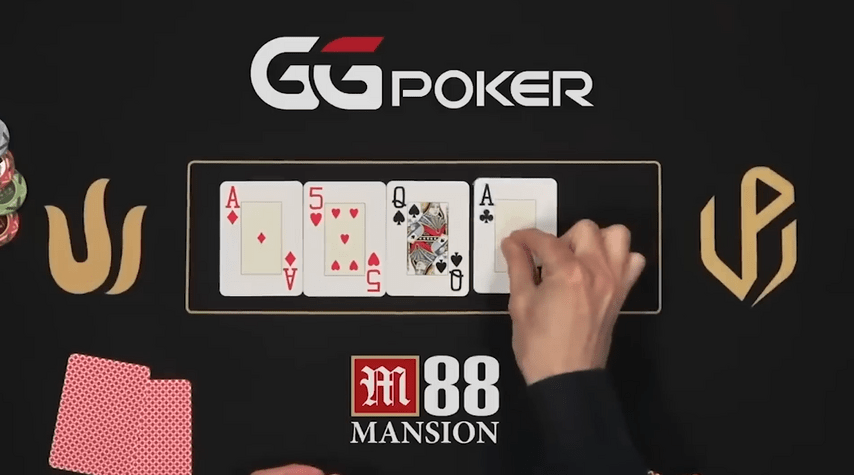
After checking his opponent's stack size, Tom bets €160,000.
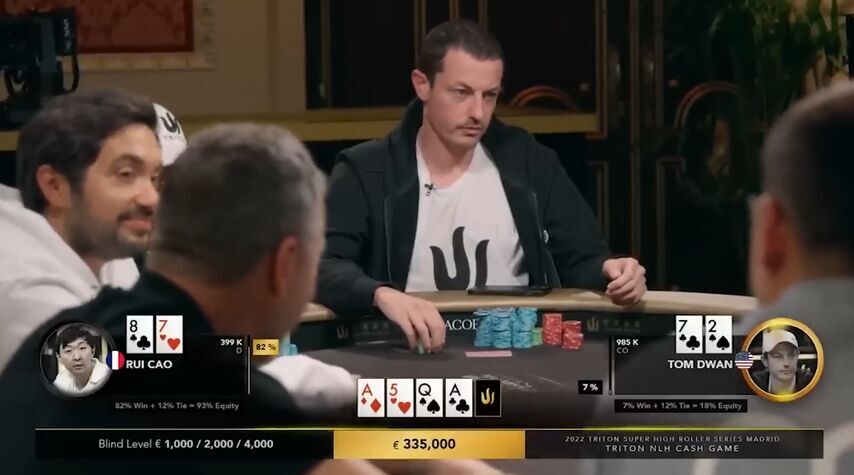
Rui calmly calls.
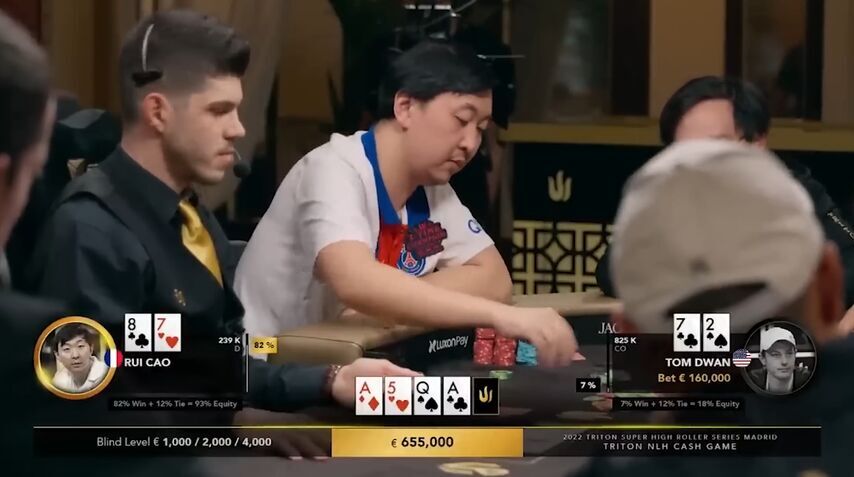
In the center of the table is €655,000.
The Ace of Clubs is a very interesting card! How does it affect players' ranges?
Tom Dwan flopped big strength. He may have , , Maybe, . Preflop slow-play with , in my opinion, is unlikely. Check-raising the flop with ATs is borderline I think. This is about value. For bluffs, he should have small pockets (two outs per set!) and all gutshots like JTs. The ace on the turn didn't change the proportion of bluffs in his range, but it significantly reduced the number of value combinations. Because of this, he should give up quite often, giving up on continuing many bluffs.
However, with 72o, Tom makes another attempt to crush his opponent and bets half the pot. Rui seems to be in a bind, but he manages to call with 8-high!
Let's look at the numbers that explain the meaning of his decision. Can such a call be profitable?
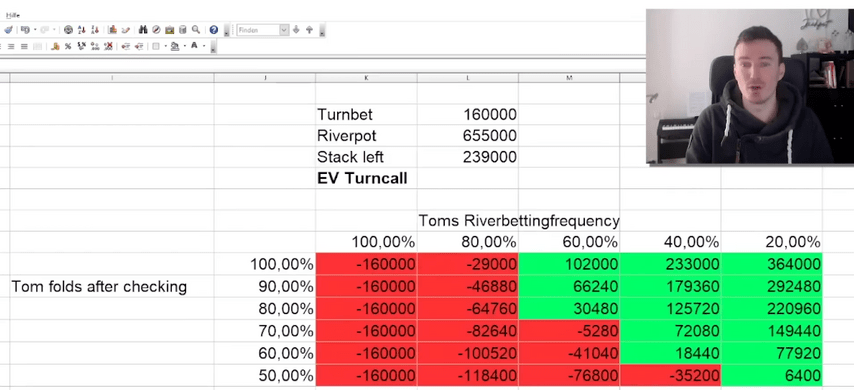
This table contains all the parameters necessary for the analysis. The turn call is €160,000, the river pot is €655,000, and the effective stack on the river is €239,000. A small but very important piece! Obviously, this is what Rui plans to use to knock the opponent out of the pot when he finally stops and checks.
If Tom goes all in on any river, Rui must fold, losing €160,000. The less often Tom shoves, the more often his opponent has the opportunity to go all-in himself, and the expectation of the hand will determine how often Tom is ready to check-call.
Let's say if Tom bets the river 60% of the time, but calls and folds every other time after checking, Villain's float is already losing €76,800. You can see under what parameters the outwardly insane 8-high line becomes positive.
Personally, I would never call the turn with 8-high, but on second thought, I suspect that Tom will bet the river less than 70% of the time and almost always fold to a shove. If my assessment is correct, calling the turn gives Rui a very effective cheap bluff in a huge pot that is likely to win. And if Tom gives up more often than I think Rui's line prints money!
Try to guess for yourself how often Tom bluffs on the river and how often he stops. And let's see how it ends.
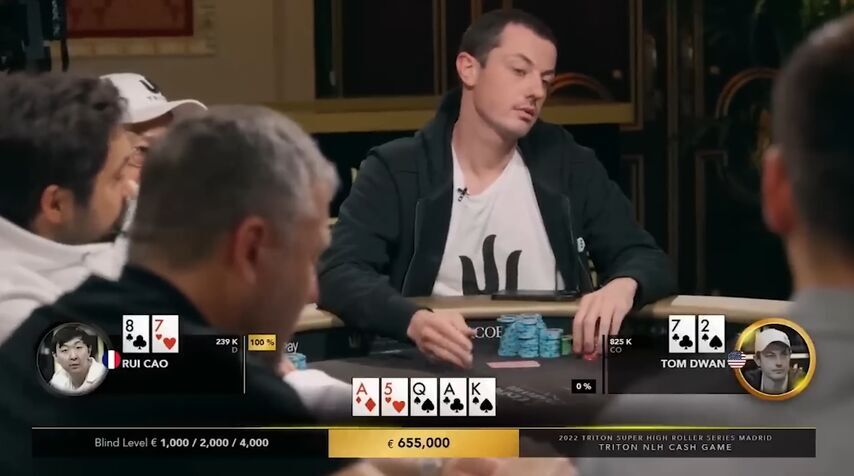
After a long pause, Tom checks.
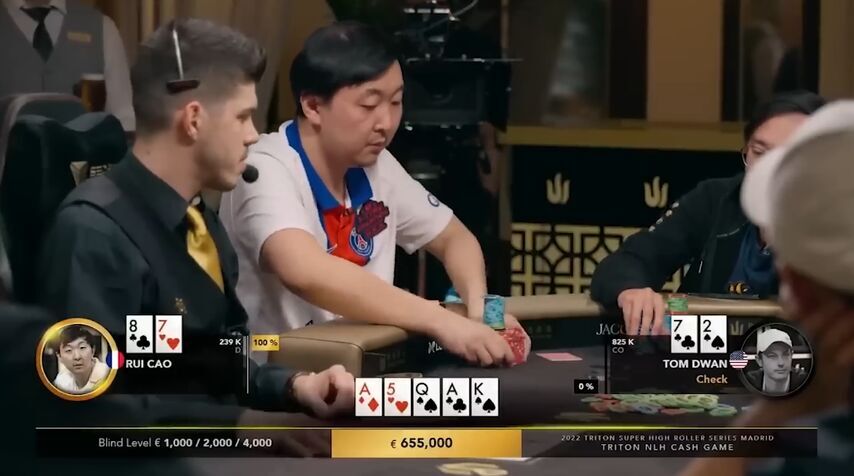
Checking his cards again, Rui busily goes all-in.
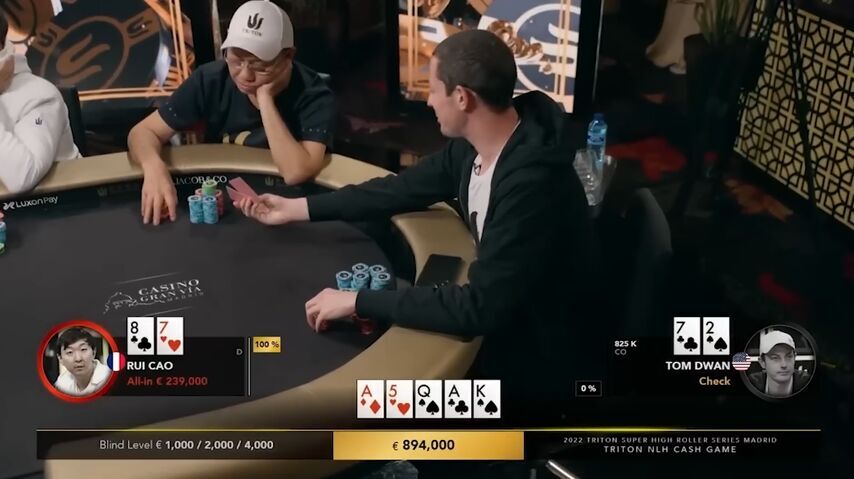
Tom gives up and shows his hand to Paul Foix.
– Why did you check? Tony G is surprised.
“Because I’m sure he’ll call my push in no time!

With a sly smile, Rui flips over his cards and everyone goes berserk.
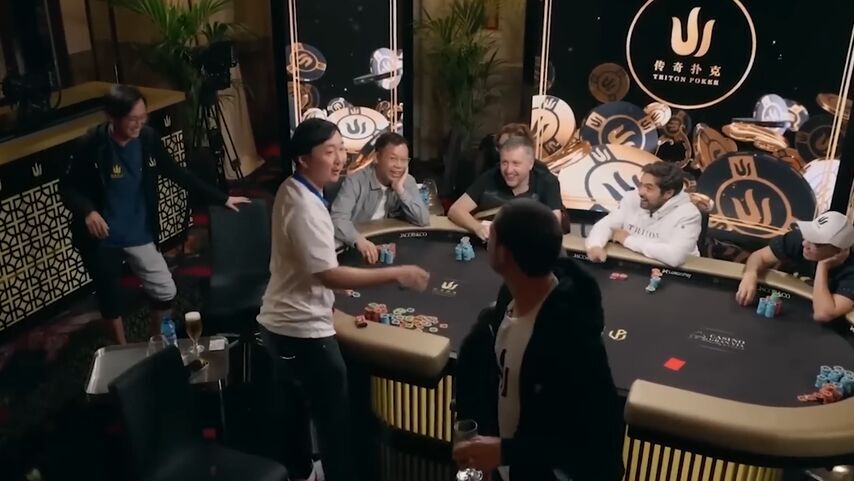
– Yes, I would have closed all-in! Rui Cao shouts excitedly. – I swear to God!
Awesome! The sage's plan worked, and he even showed 8-high after Tom put 72o on the table. That is the show! It was interesting for me to analyze this unusual situation and try to understand how such a line can be positive. After all, it was performed by a truly great player!
(By the way, note that both players ended the session in the red, with Rui Cao losing €600k.)
